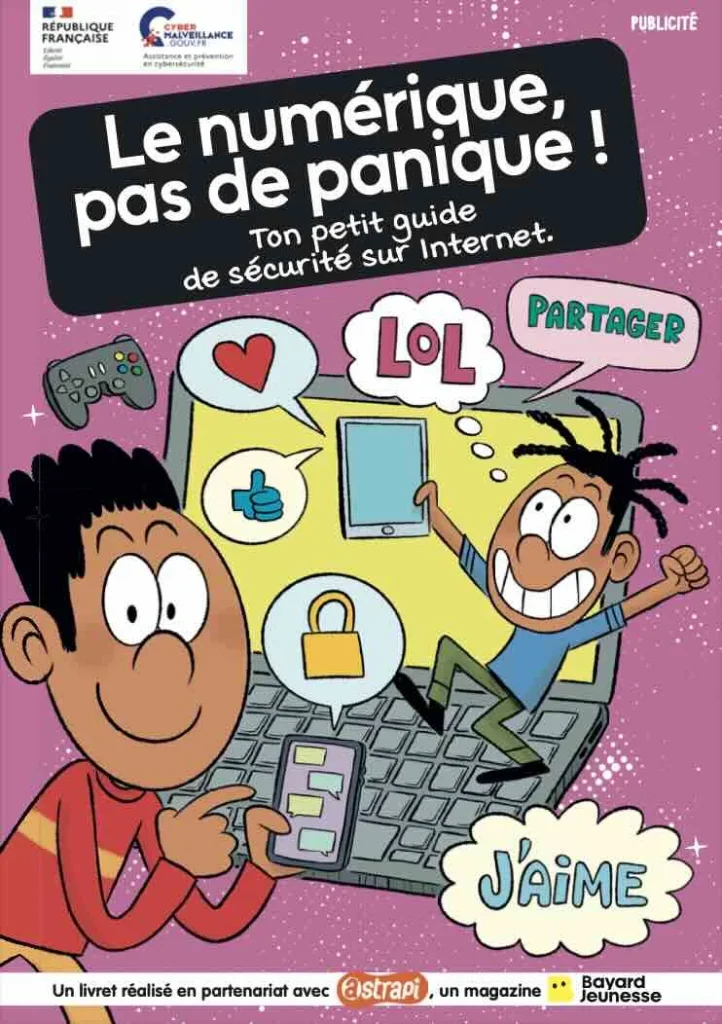October is European Cybersecurity Month (ECSM) dedicated to raising awareness of the risks and good practices connected with cybersecurity. In France, Cybersecurity Month is coordinated by Cybermalveillance.gouv.fr, the Public Interest Group for Action against Cybercrime. Composed of 64 public and private actors, this national scheme aims to help victims of cybercrime, protect organisations, raise awareness of cyber risks and monitor the threat on French soil.
We took the opportunity to interview Béatrice Hervieu, Marketing and Communication Director at Cybermalveillance.gouv.fr to talk about the challenges and solutions involved in networks:
What’s new for this Cybersecurity Month?
This is the 13th edition of Cybersecurity Month, and the third that we’ve had the privilege of coordinating. At the end of each edition, we carry out a review and systematically ask the members of the group for their feedback in order to identify their expectations for the next edition. Following the launch at Campus Cyber in 2023, at the National Assembly in 2024 and with over 400 awareness-raising events on the Cybersecurity Month agenda, primarily in the regions, we took on board the members’ wish to decentralize the event. Which is why this year we reached out to the territories through a CyberTour de France joining with the country’s cyber campuses.
The event kicked off in Rennes with 150 school pupils before moving onto Périgueux where a 600-person audience awaited, including VSEs/SMEs and lower secondary pupils from Dordogne. Next it was the Hauts-de-France campus that invited us to the Kiabi Village in Lezennes with the families and students of the vocational baccalauréat class, and lastly Rouen attended by the school community, VSEs and associations (almost 150 people in total).
This year more than 1,300 awareness-raising events took place throughout October 2025 across all of France’s territories, from Polynesia to the West Indies. I’d like to take the opportunity to applaud the creativity and energy the organisers put into creating new formats like theatre performances on cybersecurity, help desk sessions at the market dedicated to cybersecurity, and an “anti-scam” fête.
How is cybersecurity behaviour changing in France?
Cybersecurity Month has been going for 10 years now. The idea was to gauge the relevance of our actions and get a feel for French people’s perspective on cybersecurity. The second edition of the survey we conducted with Ipsos.Digital showed the positive effects of the awareness-raising actions, highlighting good levels of knowledge about threats (spam, hacking and phishing) and more widespread adoption of basic cybersecurity principles: systematic checks before buying online for 68% of respondents, use of complex and unique passwords for 55%, etc. But there is still room for improvement when it comes to backups, which almost ¾ of respondents said they do not do regularly…
Young people are another of your target audiences. Why is that?
Simply because we’ve noticed a marked contrast in the 18-34 segment, which seems to respond differently to the other adult age brackets. It might sound paradoxical, but despite being more equipped and more connected, this age group turns to institutions less often and instead tends to take a self-help approach.
29% of them have received a call from a fake bank employee, for example, and 20% have had an account hacked. That’s four times more than among 55-75 year olds. Yet only 17% notified their bank or supplier (compared with 34% of 55-75 year olds).
We wanted to analyse this trend in greater depth by surveying the 9-12 age group, which is naturally less targeted by awareness-raising actions. Yet that’s the age children tend to get their first mobile device. We conducted a survey of these young groups* which showed that between the ages of 9 and 12, 32% of children had already received a fraudulent email or SMS in the last twelve months. Which is why we need to educate them as early as possible on the risks of the Internet in order to teach them how to stay safe online.
Can you tell us about the latest content “Le numérique, pas de panique!”?
We had previously produced a resource dedicated to children and their parents, called the Cyber Guide Famille, with the help of a working group composed of our members. But we wanted to build on that and dedicate their own specific content to these youngest users.
So we joined forces with Bayard Média Développement to create an illustrated 12-page fun, educational tool sponsored by Afnic. It follows the popular heroes Sam and Pat as they encounter everyday situations of cyberbullying, fraudulent websites, online gaming, viruses, phishing, data theft, etc. Their contrasting behaviour – one careful and responsible, the other careless and clumsy – helps children easily understand what to do and what not to do online.
We deliberately chose a format combining comics, practical tips and games to get the young people involved and help them learn to browse the Internet safely, know what behaviour to adopt on video games and how to use social media responsibly.
To celebrate Cybersecurity Month, we presented the booklet to the media just a few days before it was sent out as a supplement to Astrapi readers. It was also printed in 100,000 copies so that the many group members and towns hosting the CyberTour de France or events eager to distribute the booklet to young people could do so. And it was even made into an ‘exhibition’ that travelled across Brittany and Nouvelle-Aquitaine.
What’s more, the Ministry for National Education also put in place a number of actions to lastingly raise awareness among young digital users by distributing “Le numérique, pas de panique !” to all pupils aged 9 to 12 to encourage them learn good cybersecurity practices from a young age. And for teachers too, a special tool was designed to help them present the booklet to their pupils and to encourage them to put in place educational projects on the theme of cybersecurity with their classes throughout the year.
Lastly, the “Le numérique, pas de panique !” guide is also available to download free of charge from Cybermalveillance.gouv.fr (link: https://www.cybermalveillance.gouv.fr/tous-nos-contenus/actualites/livret-numerique-pas-de- panique)
* survey conducted between 1 and 23 September by Cybermalveillance.gouv.fr and the Ministry for National Education among 4,264 pupils in years 5, 6 and 7 (cycle 3 in the French system) in Digital Educational Territories (territorial demonstrators for the use of digital technology in schools).




